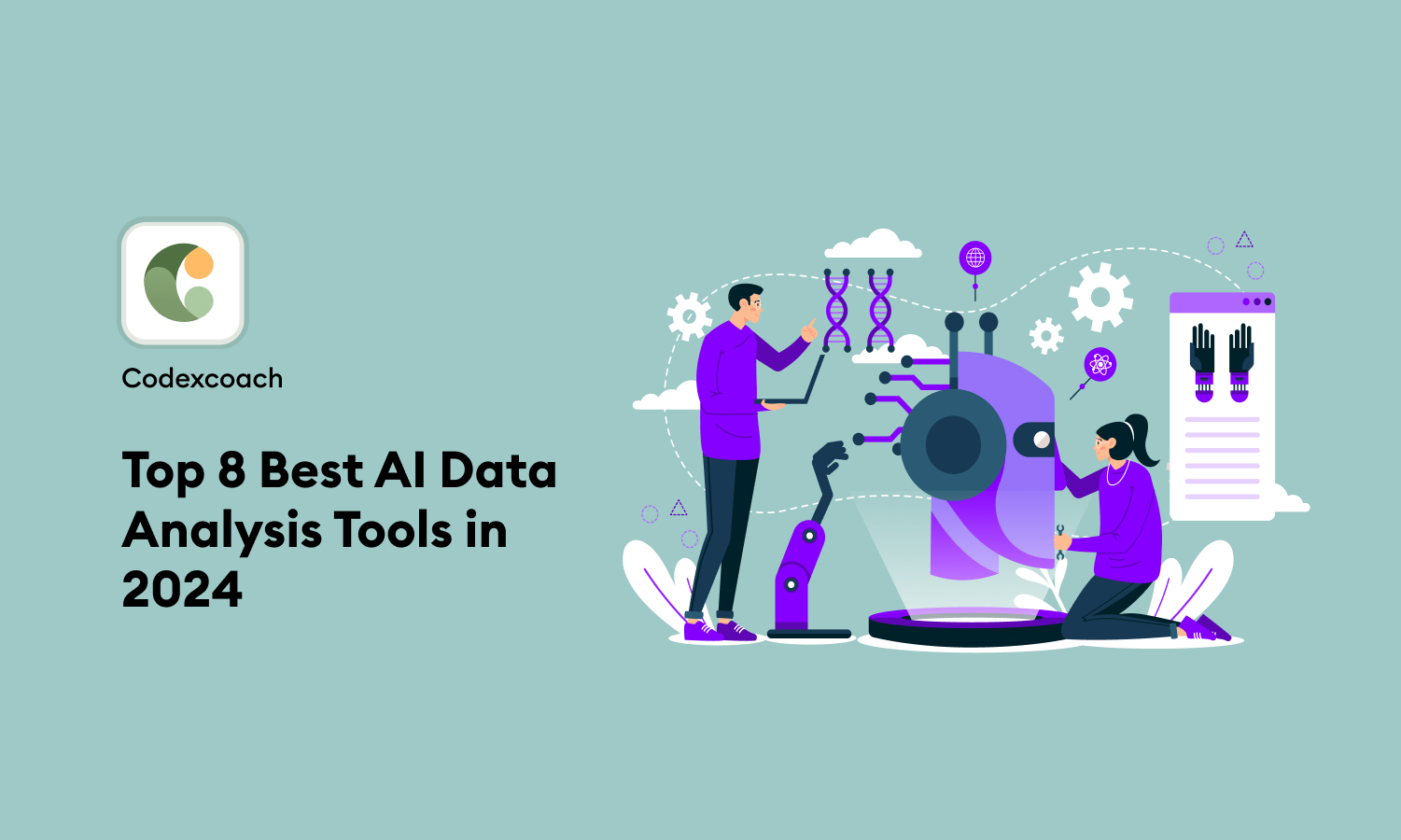In the ever-evolving world of data analysis, the integration of artificial intelligence (AI) has revolutionized the way organizations extract insights from their data. In 2024, several AI-driven data analysis tools have emerged as leaders in the field, enabling businesses to harness the power of AI for more accurate predictions, better decision-making, and improved efficiency. In this article, we will explore the top 8 AI data analysis tools in 2024, highlighting their key features and benefits.
Top 8 Best AI Data Analysis Tools in 2024
Tableau:
- Overview: Tableau has long been recognized as a leading data visualization tool. In recent years, it has incorporated AI capabilities to enhance its data analysis offerings. With Tableau, users can create interactive and shareable dashboards that not only display data but also leverage AI for various tasks.
- AI Features: One of the standout AI features in Tableau is its Natural Language Processing (NLP) capabilities, which allow users to query data using plain language. Additionally, Tableau employs predictive analytics and automated data cleaning, making it easier for users to uncover valuable insights.
Read more: Top 10 Marketing Automation Tools in 2024
Power BI:
- Overview: Developed by Microsoft, Power BI is a robust business analytics service that leverages AI for data analysis. It empowers users to connect to a wide range of data sources and utilize AI-driven insights to make informed decisions.
- AI Features: Power BI offers automated machine learning, which simplifies the process of building predictive models. It also provides AI-driven insights, helping users identify trends, anomalies, and correlations within their data.
IBM Watson Studio:
- Overview: IBM Watson Studio is a comprehensive AI and machine learning platform designed for data scientists and analysts. It offers a suite of tools for data preparation, exploration, model development, and deployment.
- AI Features: Watson Studio includes AutoAI, an automated machine learning feature that streamlines model building. It also incorporates natural language processing (NLP) capabilities and supports image recognition, making it versatile for various AI applications.
Alteryx:
- Overview: Alteryx is a data preparation and blending platform that has embraced AI and machine learning in data analytics workflows. It simplifies tasks such as data cleansing, transformation, and predictive analytics.
- AI Features: Alteryx provides predictive analytics capabilities and data profiling. It can recommend data blending strategies and suggest transformations based on AI-driven insights, saving time and effort for analysts.
RapidMiner:
- Overview: RapidMiner is an open-source data science platform that offers a broad spectrum of AI and machine learning tools. It is known for its user-friendly interface and facilitates data preparation, modeling, and deployment.
- AI Features: RapidMiner’s AI capabilities include auto-modeling, automated feature engineering, and advanced predictive analytics. It is particularly useful for data scientists seeking to streamline their workflows.
Databricks:
- Overview: Databricks is a unified analytics platform built on Apache Spark. It caters to data engineering, data science, and AI development needs. The platform enables collaborative work on big data and AI projects.
- AI Features: Databricks comes with integrated machine learning libraries, automated machine learning capabilities, and support for deep learning. It is a go-to choice for organizations dealing with large-scale data and AI applications.
QlikView/Qlik Sense:
- Overview: QlikView and Qlik Sense are data visualization and business intelligence tools known for their associative analytics approach. They have integrated AI capabilities to enhance data discovery and exploration.
- AI Features: These tools utilize the Associative Engine, which automatically associates data for users, making it easier to spot correlations and trends. They also incorporate natural language processing (NLP) and cognitive search for enhanced data analysis.
SAS Visual Analytics:
- Overview: SAS Visual Analytics is a data visualization and business intelligence platform that leverages AI and machine learning for advanced analytics. It assists organizations in making data-driven decisions.
- AI Features: SAS Visual Analytics offers automated forecasting, anomaly detection, and natural language explanations for analytics results. These AI-driven capabilities enable users to gain deeper insights from their data.
Conclusion
In conclusion, the integration of AI into data analysis tools has ushered in a new era of data-driven decision-making. The top 8 AI data analysis tools in 2024, as highlighted in this article, offer a wide range of features and capabilities to empower organizations in extracting actionable insights from their data. While these tools have reached prominence in the data analysis landscape, it’s crucial to stay updated on emerging technologies and trends in AI and data analytics to ensure that your organization remains at the forefront of data-driven innovation.






